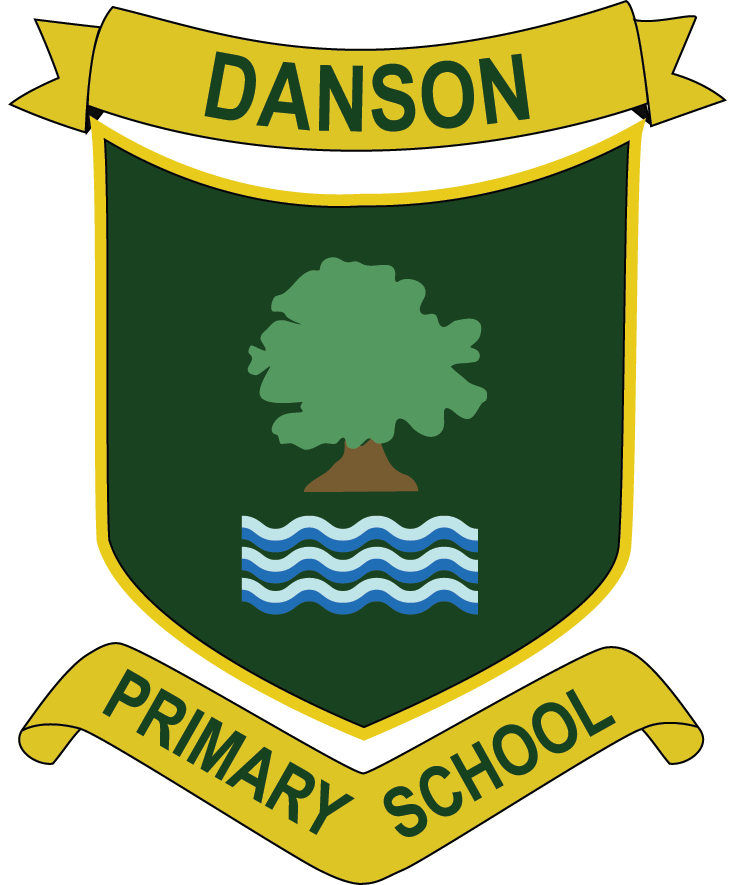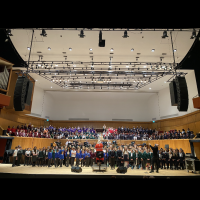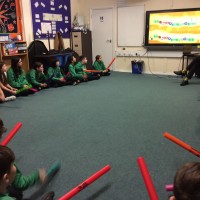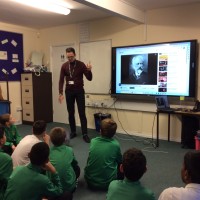Music
At Danson, we believe that music can make a significant contribution to children’s development: increase their confidence and self-esteem; build an ethos of teamwork; enhance concentration and creativity while improving social cohesion within the school and wider community.
Our music curriculum is based on: Listening and Appraising; Musical Activities — creating and exploring; and Singing and Performing. Our children are exposed to a wide range of musical genres taken from different cultures and religions. They are encouraged to express themselves through carefully structured music sessions that promote creativity and individuality.
At the centre of our music curriculum is singing which can support children’s learning and emotional development in all curricular areas. Singing encourages a child to express their emotions and sharpens their ability to communicate while exercising lip and tongue movement which are needed for phonics. One of the biggest benefits of singing is the repeated use of the ‘memory muscle’. Singing is, of course, not something that has to be done alone. Learning to work together in a group or choir can give children a sense of collectivism and can help children make friends.
Danson Primary School Music Development Plan
Danson Primary School Music Policy
Music Overview
Music-EYFS
Music - Listen & Appraise Knowledge & Skills Progression
Music - Musical Games Knowledge & Skills Progression
Music - Singing Knowledge & Skills Progression
Music - Playing Knowledge & Skills Progression
Music - Improvisation Knowledge & Skills Progression
Music - Composition Knowledge & Skills Progression
Music - Performance Knowledge & Skills Progression
A pupil’s musical journey begins the minute they enter the school building for the first time in reception and continues until they walk away in Year 6. Nursery rhymes, alphabet and counting songs help smaller children to focus on and apply taught number facts, as well as exposing them to early rhyme and rhythm.
Throughout Key Stage One, a more formal approach to the teaching of music serves to develop the idea of genre and how different styles of music are put together. Listening to and identifying instruments within music and repetitive phrases are key in building upon our children’s exposure from the early years.
From Key Stage Two, the Music curriculum becomes gradually more advanced. Technical language such as tempo, bridge and pitch begin to build a deeper understanding of how music is created. Composition is explored along with learning how to put a song together with harmonies and singing parts. A regular singing assembly in both Key Stage One and Two enriches our curriculum and enables the celebration of music. We invite outside music specialists to come into our school and offer advice and lessons to our pupils.
We introduce pupils to a wide variety of musical styles and encourage them to respond to the music. This year we have introduced Charanga, which is a new music scheme to be used at Danson. This scheme consists of 6 units per year and will be written around one song that each class will learn, sing and perform at the end of each unit.
Each Unit of Work comprises the following strands of musical learning which correspond with the national curriculum for music:
Reception unit structure
- Listen and Respond
- Explore and Create - initially using voices only, but building to using classroom instruments too
- Singing - nursery rhymes and action songs - building to singing and playing
- Share and Perform
Key Stage 1 and Key Stage 2 unit structure
- Listen and Appraise
- Musical Activities - learn and/or build on your knowledge and understanding about the interrelated dimensions of music through:
- Games (Warm-up Games and Flexible Games)
- Singing
- Playing Instruments (classroom and or band instruments)
- Improvisation
- Composition
- Perform and Share
The units of work are all taught in sequence and are progressively developed so that skills are increased and knowledge is built upon as each unit is taught. They all usually have one central song that the class will learn, sing and perform.
Charanga Musical School Units of Work enable children to understand musical concepts through a repetition-based approach to learning. Learning about the same musical concept through different musical activities enables a more secure, deeper learning and mastery of musical skills.
All musical learning in the Scheme is built around the Interrelated Dimensions of Music: pulse, rhythm, pitch, tempo, dynamics, timbre, texture, structure and notation. These dimensions are at the centre of all the learning; they are musical building blocks. This is an integrated approach to musical learning where games, the interrelated dimensions of music, singing and playing instruments are all linked (the spiral of learning).
The national curriculum states: ...’understand and explore how music is created, produced and communicated, including through the interrelated dimensions: pitch, duration, dynamics, tempo, timbre, texture, structure and appropriate musical notations’.
In Charanga Musical School, lessons always begin with pulse as a foundation and with rhythm and pitch as the next two building blocks. All other key areas are explored as the pupils move through the units:
- Pulse – the regular heartbeat of the music, the steady beat
- Rhythm – long and short sounds or patterns that happen over the pulse, the steady beat
- Pitch – high and low sounds
- Tempo – the speed of the music, fast or slow or in-between
- Dynamics – how loud or quiet music is
- Timbre – all instruments including voices, have a certain sound quality eg the trumpet has a very different sound quality to the violin
- Texture – layers of sound. Layers of sound working together make music very interesting to listen to.
- Structure – every piece of music has a structure e.g. introduction, verse, chorus ending
Music also plays an important part in productions that occur throughout the year. Each year group also has the opportunity to practise and perform as a collective ensemble to a wider audience which the children always enjoy and so too does the audience!




